
Deadliest animals in the world ranked by estimated number of human fatalities per year

Best selling novels worldwide ranked by estimated number of copies sold

Fastest manned aircraft (excluding spacecraft) ranked by top speed

Major religions of the world ranked by estimated number of followers

The ten worst genocides of the 20th century listed by dictators responsible; ranked by number of deaths
World's Largest Bodies of Water
Largest bodies of the water in the world ranked by area
1.
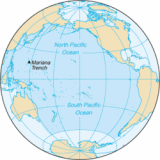
Pacific Ocean(155,556,651 sq km (60,060,759 sq mi))
The Pacific Ocean is the largest of the Earth's oceanic divisions. It extends from the Arctic in the north to the Southern Ocean in the south, bounded by Asia and Australia in the west, and the Americas in the east.At 165.2 million square kilometres in area, this largest division of the World Ocean – and,
2.
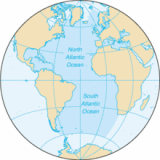
Atlantic Ocean(76,761,938 sq km (29,637,950 sq mi))
The Atlantic Ocean is the second-largest of the world's oceanic divisions. With a total area of about , it covers approximately 20% of the Earth's surface and about 26% of its water surface area
3.
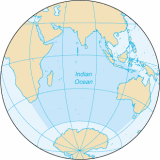
Indian Ocean(68,555,923 sq km (26,469,590 sq mi))
The Indian Ocean is the third largest of the world's oceanic divisions, covering approximately 20% of the water on the Earth's surface. It is bounded on the north by the Indian Subcontinent and Arabian Peninsula ; on the west by eastern Africa; on the east by Indochina, the Sunda Islands, and Australia; and on the south by the Southern
4.

Southern Ocean(20,327,001 sq km (7,848,299 sq mi))
The Southern Ocean comprises the southernmost waters of the World Ocean, generally taken to be south of 60°S latitude and encircling Antarctica. It is usually regarded as the fourth-largest of the five principal oceanic divisions
5.
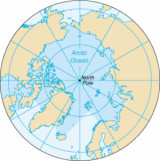
Arctic Ocean(14,055,930 sq km (5,427,025 sq mi))
The Arctic Ocean, located in the Northern Hemisphere and mostly in the Arctic north polar region, is the smallest and shallowest of the world's five major oceanic divisions
6.
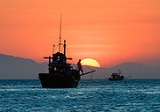
South China Sea(2,974,601 sq km (1,148,500 sq mi))
The South China Sea is a marginal sea that is part of the Pacific Ocean, encompassing an area from the Singapore and Malacca Straits to the Strait of Taiwan of around
7.

Caribbean Sea(2,515,898 sq km (971,394 sq mi))
The Caribbean Sea is a sea of the Atlantic Ocean located in the tropics of the Western hemisphere. It is bounded by Mexico and Central America to the west and southwest, to the north by the Greater Antilles, and to the east by the Lesser Antilles.
8.

Mediterranean Sea(2,513,169 sq km (970,340 sq mi))
The Mediterranean Sea is a sea connected to the Atlantic Ocean surrounded by the Mediterranean region and almost completely enclosed by land: on the north by Anatolia and Europe, on the south by North Africa, and on the east by the Levant
9.

Bering Sea(2,260,971 sq km (872,966 sq mi))
The Bering Sea is a marginal sea of the Pacific Ocean. It comprises a deep water basin, which then rises through a narrow slope into the shallower water above the continental shelves.
10.

Gulf of Mexico(1,507,476 sq km (582,040 sq mi))
The Gulf of Mexico is a partially landlocked ocean basin largely surrounded by the North American continent and the island of Cuba. It is bounded on the northeast, north and northwest by the Gulf Coast of the United States, on the southwest and south by Mexico, and on the southeast by Cuba. In Texas and Louisiana it is often called the "Third Coast," in comparison with the U.S



